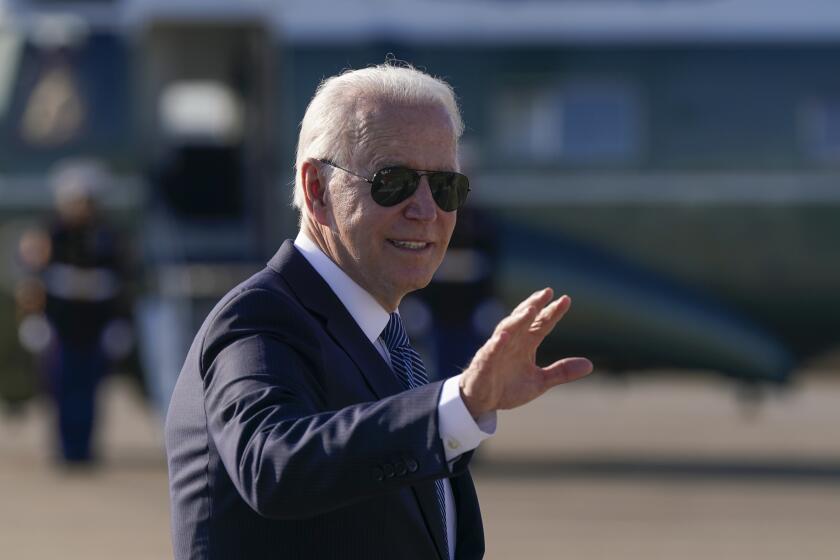Beethoven’s 9th Roars to Life Under De Waart’s Baton
- Share via
Edo de Waart was once a familiar presence on the American music scene. He was music director of the San Francisco Symphony and the Minnesota Orchestra. He was a regular guest at the Los Angeles Philharmonic. He made lots of records. He was viewed as a solid, musical, respectable conductor, but not one who could always set a performance on fire.
Lately, though, De Waart has been somewhat scarce in America. He did appear at Santa Fe Opera last summer, but his career has been focused mostly in Europe, especially his native Holland, and in Australia, where he has been music director of the Sydney Symphony since 1992.
On Saturday night, De Waart, touring with the Sydney Symphony, returned to Los Angeles for a program of Beethoven’s Eighth and Ninth symphonies at UCLA’s Royce Hall. And after it was over, the audience went wild, standing and cheering, calling the conductor back again and again. Absence may have had its usual effect on the heart. But there was something more: The Ninth was given not just De Waart’s usually cohesive rendering, but an unusually exciting one.
The Sydney Symphony is an orchestra with many young, spirited players. It is not a particularly smooth or well-balanced band. But it is an orchestra without any terrible weaknesses. The solo playing was reliable, and the ensemble work had fine rhythmic discipline.
One could, of course, find more polished, more sophisticated, even more radical Beethoven playing at the Music Center across town; the Philharmonic had the Fifth Symphony and the “Emperor” Concerto on its program. But the Australians brought a kind of visceral eagerness for Beethoven that had its own irresistible vitality. The large chorus in the Ninth Symphony--a combined UCLA Chorale and Angeles Chorale--added even more youthful enthusiasm to the mix. And the Royce acoustic, detailed and energetic, happily made no effort to contain all these bursting spirits.
Throughout both symphonies, De Waart seemed the perfect guide, able to channel all this young vitality into a speeding train that never threatened to jump the tracks. His opera experience was useful, and he saw the Ninth less as a vast philosophical statement than as a great drama. There may not have been quite the time to ponder the depths of the music that other, more spiritual performances might allow. And the slow movement was a little less transcendental than it could have been. But the sheer force of the musical argument, the sheer thrill of the performers’ commitment, and the cumulative power of all that energy, was plenty to sweep one along, thrilled, with it.
The soloists for the great choral finale, the “Ode to Joy,” of the Ninth--Christine Goerke, Mary Ann McCormack, Thomas Studebaker and Stephen Powell--were operatic, powerful and unfettered, and that, too, fit De Waart’s conception just right. This, in fact, was a performance that seemed to have the capacity for as much fuel as its performers could supply.
The Eighth Symphony was like that, too, but less successful. It is a symphony from an earlier period in Beethoven’s life, and it is also a symphony wanting a lighter touch. The orchestra was involved in a Beethoven festival in Sydney in June and is presumably at home with all the symphonies. But here its ardor became a kind of fanaticism, too heavy and forceful for music more dance than oracle.
The Eighth annoyed for another reason. Elsewhere on its American tour, the Sydney Symphony will be playing Graeme Koehne’s “Elevator Music,” a work it commissioned from one of Australia’s most intriguing postmodern voices. And given that its Beethoven Ninth seemed to embrace so much of Australia’s bracing spirit, that performance begged for the context of the region’s own music, a continent, incidentally, bursting with fresh compositional voices. How is it that our largest local university lacks inquisitiveness about the larger world we inhabit?
More to Read
The biggest entertainment stories
Get our big stories about Hollywood, film, television, music, arts, culture and more right in your inbox as soon as they publish.
You may occasionally receive promotional content from the Los Angeles Times.











